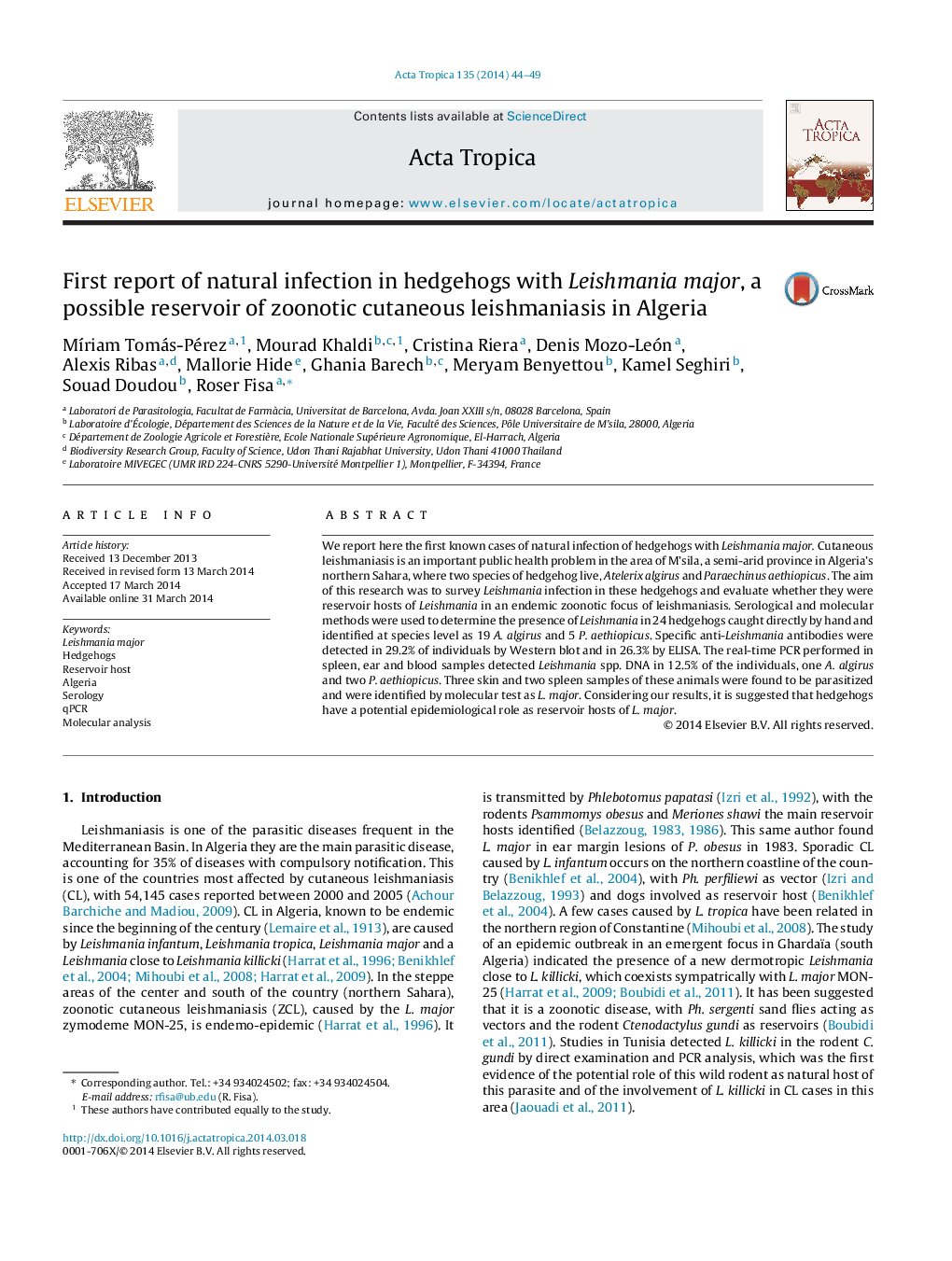| Article ID | Journal | Published Year | Pages | File Type |
|---|---|---|---|---|
| 3393830 | Acta Tropica | 2014 | 6 Pages |
•First report of confirmed Leishmania major infection in hedgehogs.•We detect Leishmania in skin and spleen tissues by high sensitive qPCR.•Serological methods detect specific Leishmania antibodies in hedgehogs.•The molecular methods used allow identifying the species involved as L. major.•We find out that hedgehogs could be reservoirs of L. major.
We report here the first known cases of natural infection of hedgehogs with Leishmania major. Cutaneous leishmaniasis is an important public health problem in the area of M'sila, a semi-arid province in Algeria's northern Sahara, where two species of hedgehog live, Atelerix algirus and Paraechinus aethiopicus. The aim of this research was to survey Leishmania infection in these hedgehogs and evaluate whether they were reservoir hosts of Leishmania in an endemic zoonotic focus of leishmaniasis. Serological and molecular methods were used to determine the presence of Leishmania in 24 hedgehogs caught directly by hand and identified at species level as 19 A. algirus and 5 P. aethiopicus. Specific anti-Leishmania antibodies were detected in 29.2% of individuals by Western blot and in 26.3% by ELISA. The real-time PCR performed in spleen, ear and blood samples detected Leishmania spp. DNA in 12.5% of the individuals, one A. algirus and two P. aethiopicus. Three skin and two spleen samples of these animals were found to be parasitized and were identified by molecular test as L. major. Considering our results, it is suggested that hedgehogs have a potential epidemiological role as reservoir hosts of L. major.
Graphical abstractFirst report of confirmed Leishmania major infection in hedgehogs by molecular and serological methods, which indicates they are natural reservoir hosts of the parasite in Algeria.Figure optionsDownload full-size imageDownload as PowerPoint slide
